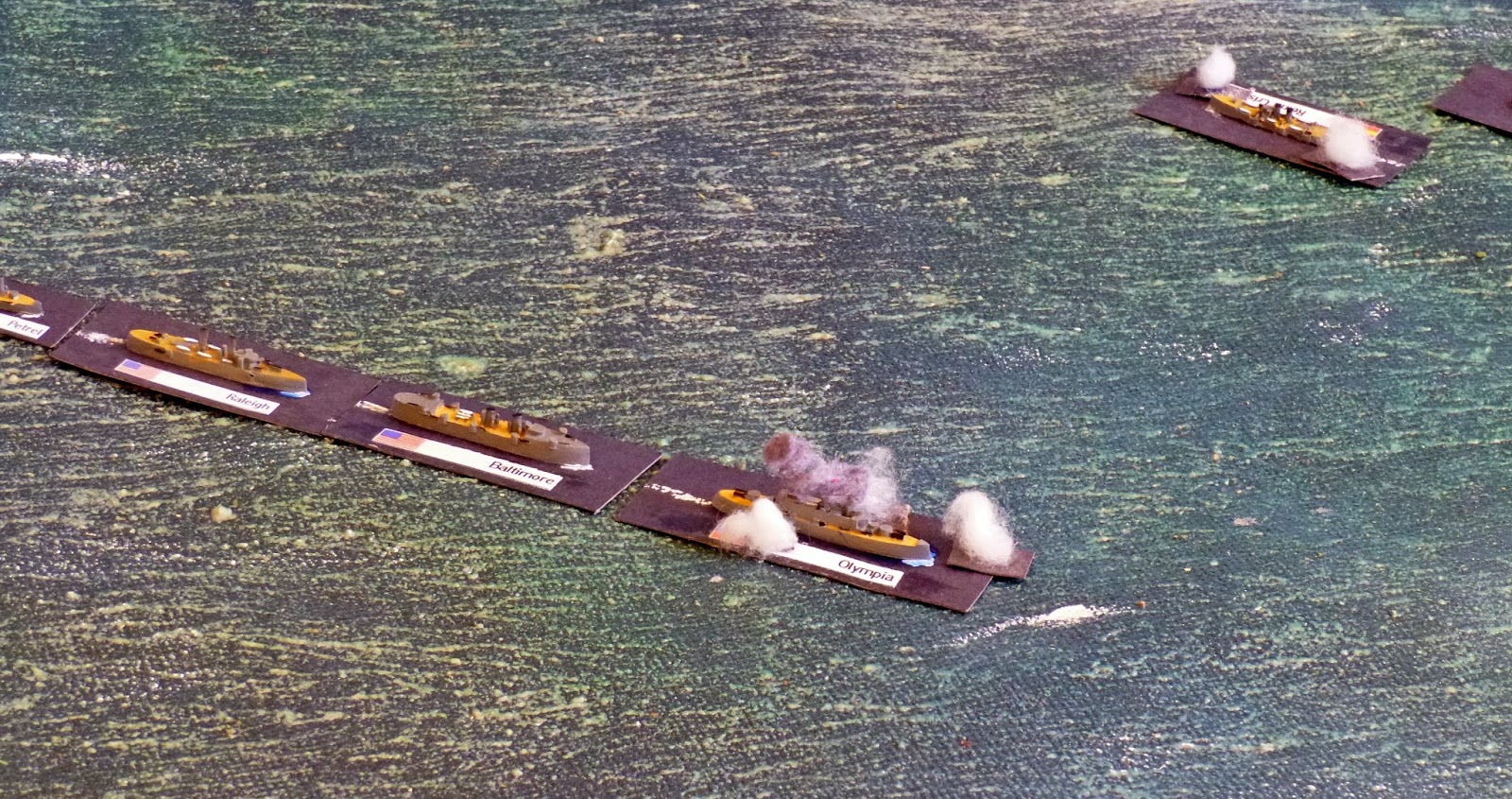Fleet Admiral is a new set of naval miniatures rules written by Bill Madison. The first volume covers the period between 1890-1924, a time of great transition for the world's navies.
Regular readers here may be forgiven for not knowing that I am a keen naval gazer...er...gamer. This being, IIRC only the second naval gaming post to the blog. Be that as it may I have been playing naval games for these past twenty years at least.
I quite enjoy Bill's game. The rules are easy to use and give a nice narrative to the game.
After corresponding with Bill on a few matters he asked if I would write up ship data sheets and a couple of scenarios for the Spanish American War, namely Manila Bay and Santiago.
The ship data sheets are all done and up on the Fleet Admiral website.
Here then is the first half of a play test of the Manila Bay scenario:
0512: Dewey leads his squadron past Manila and towards the waiting Spanish fleet of Admiral Montojo off Cavite.
The US Squadron.
The Spanish fleet at anchor
0515 Olympia exchanges for with Reina Cristina.
A lucky shot ignites a fire in Olympia's magazine.
The fleets exchange fire.
The action becomes general. Gridley was forced to flood Olympia's main battery magazine. With one of her main battery turrets already disabled this wasn't so great a blow as one might think.
The lead three ships of the Spanish fleet are hotly engaged.
05:30 The big picture: Olympia turns away to bring the line around for another pass.
Up to this point the US has landed 15 hits versus only 5 for the Spanish. Still the US has suffered heavier damage with Olympia taking the brunt of the damage.
0533 three shells from Raleigh tear into Isla de Cuba. Two strike her magazine and she disappears in pall of thick smoke.
After about two hours of play I decided to call a halt for today.
I've played the scenario very cautiously. The Spaniards have remained at anchor and simply traded fire with the US ships as they passed. This was a deliberate decision in an attempt to see if the scenario is worth playing. After all the historical battle was very one sided with the Spanish fleet destroyed and the US fleet having taken only 7 hits and only one man lost (due to a stroke).
Fleet Admiral does not generally take crew quality into account which for this scenario is a good thing. The Spanish fought very bravely but also very haphazardly in the real battle. Their rate of fire was prolific but aim poor. Those ships capable of movement maneuvered individually and often fouled one another's range.
In contrast the US gunnery, while poor by later standards, certainly overwhelmed the Spaniards. Dewey's control over his squadrons movement was superb and very orderly.
There were also technical issues that plagued the Spanish cause.
However this play test shows the battle is no push over for the US even if the Spanish fight from static positions under the game rules.
The final scenario will have a random element in that Spanish fleet may or may not be plagued by the mechanical issues of the day, and therefore be operating at full ability.
Although randomly determined before play, the US player will not know which option the Spaniard is operating under unless and until he sees something moving that shouldn't be or gets shot at by something that should be unarmed.
It will provide a nice game with victory achievable by either side.
As always, thanks for stopping by!











Great AAR Bob and excellent models and scenery!
ReplyDeleteThanks a ton for all your effort!
Cheers
Bill
Thank you Bill. Hope you enjoy playing the scenario.
DeleteNice! Must admit, though; never been much of a naval type - good game, though ;)
ReplyDeleteThanks Monty. Different world naval gaming, Nowhere to hide and the players at large prefer mor mechanistic than morale based solutions...although I have my doubts on the real accuracy of that approach. This battle in particular highlights the rift.
ReplyDelete